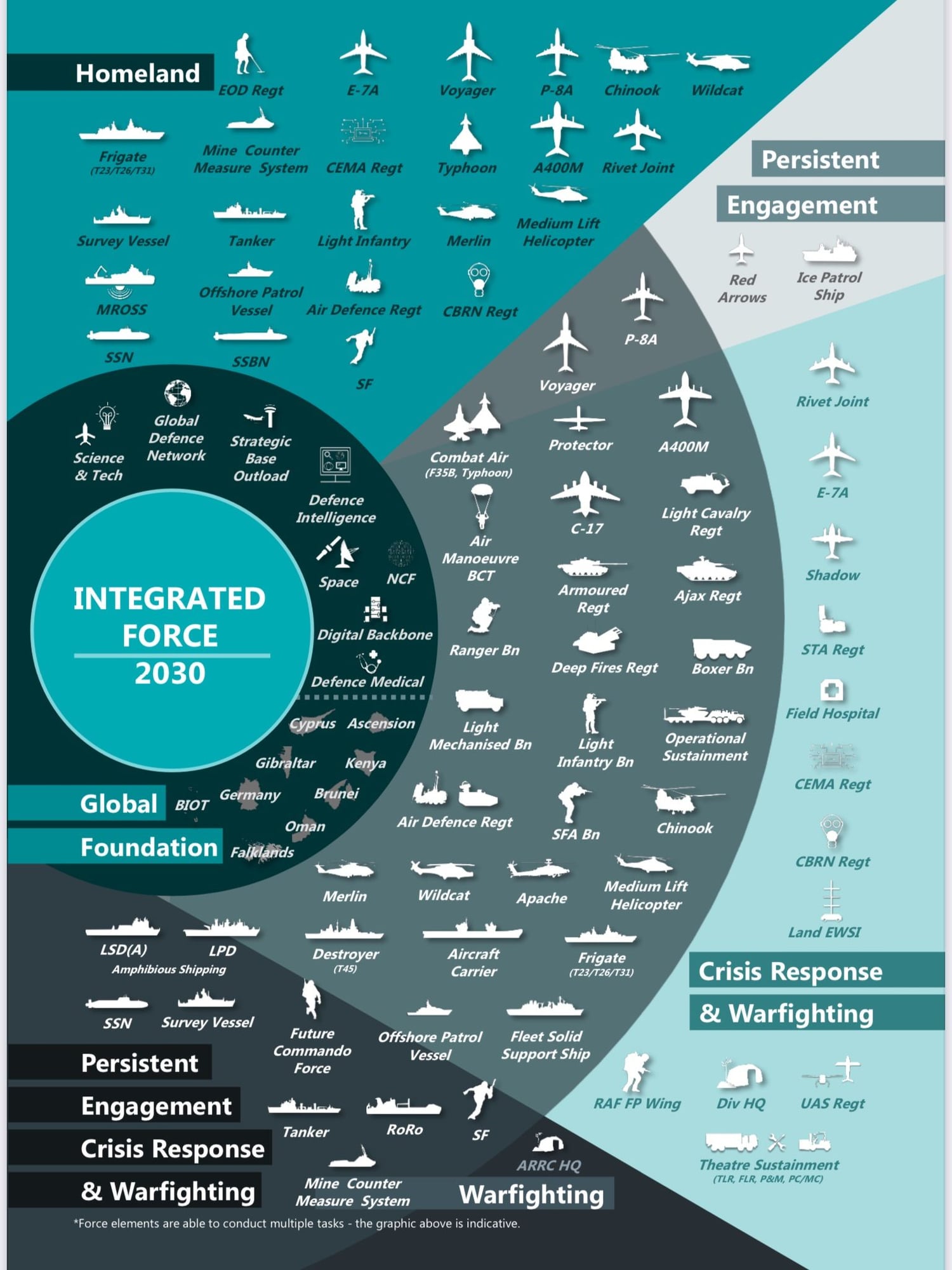https://www.gov.uk/government/publicati ... ign-policy
/
https://assets.publishing.service.gov.u ... ve_age.pdf
We will retire the E-3D Sentry in 2021, as
part of the transition to the more modern and
more capable fleet of three E-7A Wedgetail in
2023. The E-7A will transform our UK Airborne
Early Warning and Control capability and the
UK’s contribution to NATO. The nine P-8A
Poseidon maritime patrol aircraft will help to
secure our seas. The introduction into service of
the 16 long-range Protector remotely piloted
systems will be the backbone of persistent, multispectral surveillance, with the ability to strike and
act decisively against our potential adversaries
around the globe.
The Royal Air Force will retire equipment
that has increasingly limited utility in the digital
and future operating environment. This will
include rationalising older fleets to improve
efficiency, retiring Typhoon Tranche 1 by 2025,
and Hawk T1. We will enhance the new military
flying training system with further investment in
synthetic training that will deliver more capable
pilots more quickly and more efficiently. The
Royal Air Force will retire the BAe146 as planned
by 2022 and take the C130 Hercules out of
service by 2023. The A400M Atlas force will
increase its capacity and capability, operating
alongside C-17 Globemaster and Voyager
transport aircraft and tankers.
The Royal Air Force will continue to grow
its Combat Air capacity over the next few years
as we fully establish all seven operational
Typhoon Squadrons and grow the Lightning II
Force, increasing the fleet size beyond the 48
aircraft that we have already ordered.
https://www.gov.uk/government/publicati ... ign-policyThe Armyis retiring its oldest CH-47
Chinook helicopters and investing, alongside the
US, in newer variants of this operationally proven
aircraft, enhancing capability, efficiency and
interoperability. Our AH-64 Apache Attack
Helicopters will be upgraded to a state-of-the-art
capability by 2025. Investment in a new medium
lift helicopter in the mid-2020s will enable a
consolidation of the Army’s disparate fleet of
medium lift helicopters from four platform types
to one; including the replacement of Puma. The
Army will also retain and upgrade Watchkeeper.
/
https://assets.publishing.service.gov.u ... ve_age.pdf
https://www.flightglobal.com/defence/ty ... 90.article
The UK will retire its Tranche 1 Eurofighter Typhoons, Lockheed Martin C-130J tactical transports and Airbus Helicopters Puma HC2 rotorcraft by the middle of this decade, as the Ministry of Defence (MoD) targets a range of capability updates.
Detailed within a Command Paper publication released on 22 March titled Defence in a competitive age, and covering the period to 2025, the MoD’s plan also includes major new investment in a future combat air system (FCAS) project, but provides only vague details on its total commitment to the stealthy Lockheed Martin F-35B.
Around 24 of the Royal Air Force’s (RAF’s) oldest Typhoons will leave service by 2025, with the saved support funds to be channelled into upgrades to its more modern Tranche 2 and 3 jets. This will include integrating MBDA’s Spear 3 air-to-surface missile and an active electronically scanned array radar. The service will continue to sustain its current seven-squadron strength with the type, including a joint unit formed with Qatar’s air force.
A decision on potentially reducing the UK’s programme of record requirement to eventually acquire 138 F-35s appears to have been deferred until the time of its next strategic defence review in 2025.
Meanwhile, a project to replace the RAF’s Boeing 707-based E-3D Sentry airborne warning and control system aircraft with five 737-derived E-7A Wedgetails has been cut back to just three airframes. The MoD last year ordered a trio of 737NGs for conversion into the surveillance type, plus two secondhand airframes sourced via Boeing for modification by STS Aviation Services. The first of these arrived at the company’s facility at Birmingham airport in early January.
Retirement of the RAF’s stretched-fuselage C-130J-30s by 2023 will see “the A400M Atlas force increase its capacity and capability”, the MoD says. The first operator of the “Super Hercules”, the UK has previously withdrawn its short-fuselage C-130Js and sold the surplus assets to Bahrain, Bangladesh and the US Navy.
A pair of BAe 146 transports acquired secondhand to support operations in Afghanistan will also leave use next year.
Use of the Puma rotorcraft will be brought to an end in the 2023-2025 period, with a replacement medium-weight helicopter to be acquired.
https://www.flightglobal.com/defence/ty ... 90.articleIn the training sector, the RAF’s remaining British Aerospace Hawk T1 trainers will leave use by 2023, apart from those assigned to the Red Arrows aerobatic display team, which will continue to fly the type until 2030.




